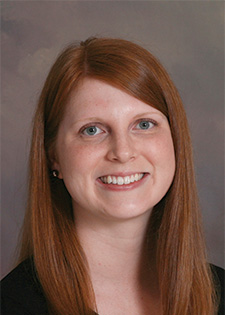The safest way for infants to sleep is on their back, alone on a firm mattress in a crib or bassinette, with no blankets, pillows, comforters, stuffed animals or toys, according to the American Academy of Pediatrics.
However, a report in the January 2015 issue of the journal Pediatrics finds that more than half of American infants are still sleeping in conditions that increase their risk for sudden infant death syndrome (SIDS).
 “SIDS is the No. 1 cause of postneonatal mortality,” said Holley Beam, MD, a pediatrician with Children’s Healthcare of West Georgia, a Tanner Medical Group practice. “The rate of infant deaths attributed to SIDS has declined since 2000, but the infant mortality rate related to unintentional sleep-related suffocation has more than doubled.”
“SIDS is the No. 1 cause of postneonatal mortality,” said Holley Beam, MD, a pediatrician with Children’s Healthcare of West Georgia, a Tanner Medical Group practice. “The rate of infant deaths attributed to SIDS has declined since 2000, but the infant mortality rate related to unintentional sleep-related suffocation has more than doubled.”
Unintentional sleep-related suffocation is the leading cause of infant mortality from injury. In 2000, it accounted for 7 deaths per every 100,000 live births. By 2010, that rate had increased to almost 16 deaths per every 100,000 live births caused by unintentional sleep-related suffocation.
Inappropriate bedding is a major risk factor for unintentional sleep-related suffocation among infants.
“Bedding is a modifiable risk factor,” said Dr. Beam. “What we put in the crib with babies is something we can control.”
The Pediatrics study relied on data from the National Infant Sleep Position study, which has documented how parents and caregivers put infants to bed since 1993. According to the study, the use of quilts, pillows, blankets and other “bedtime contraband” has declined substantially since 1993, but remains a widespread concern. From 1993 to 1995, almost 86 percent of caregivers reported putting infants to bed with dangerous extra bedding; by 2010, the prevalence fell to almost 55 percent.
Some of that decline is attributed to the “Safe to Sleep” campaign from the Eunice Kennedy Shriver National Institute for Child Health and Human Development at the National Institutes of Health. The campaign began as the “Back to Sleep” campaign in 1994 to educate parents and caregivers on safe sleep practices for infants.
Despite the success of that campaign, findings that almost 55 percent of caregivers are putting babies to bed on or under blankets, with pillows and quilts and other unsafe sleep practices needs to change.
“That is still far too many parents and caregivers putting babies to bed with blankets, pillows, stuffed animals and more,” said Dr. Beam.
While this study did not ask parents and caregivers why they used unsafe bedding despite warnings from pediatricians and other sources, other research has found that many worry that the infant will be cold without a blanket, or that the mattress in the crib is too hard.
In some instances, caregivers are faced with mixed messages when it comes to bedding for babies, with packaging or advertisements that depict infants lying on pillows or under blankets. Some parents feel obligated to use unsafe bedding that a friend or relative purchased for the baby.
“This is contrary to what we know about SIDS,” said Dr. Beam. “For instance, we know that the risk of SIDS increases if the baby is too warm, so putting blankets in the crib increases the risk both from suffocation and from the baby getting too hot. Also, many crib mattresses are manufactured to be firm because we know that a firm sleep surface lowers the risk of SIDS, so putting quilts and pillows under the baby is contrary to the research as well.”
A warm full-body sleeper and wearable blanket or “sleep sack” that is the correct size for the infant can provide additional warmth in winter. It’s also a good practice to give babies plenty of supervised “tummy time,” which helps them build the muscles in their arms and necks so they can move on their own if they are having trouble breathing.
Along with findings on bedding, the study also found that almost 73 percent of babies are put to sleep on their backs. Most babies — more than 56 percent — sleep in cribs, while 18 percent sleep in bassinets, 11 percent sleep in adult beds and more than 14 percent have other sleeping arrangements. Most babies, more than 86 percent, sleep in their crib or bassinette alone. The study was led by researchers at the Centers for Disease Control and Prevention (CDC).
Children’s Healthcare of West Georgia has locations in Carrollton, Villa Rica and Bremen. To find a pediatrician or primary care provider serving west Georgia, call 770.214.CARE or click Find a Doctor at the top of this page.